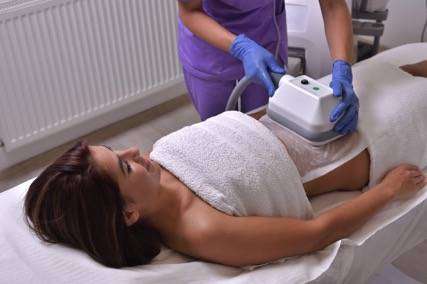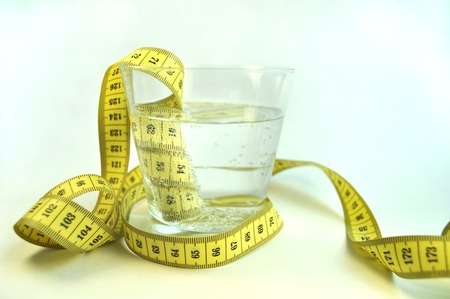Ever wondered why some people seem to burn calories effortlessly while others struggle?
The secret might lie in a special type of fat known as brown adipose tissue (BAT).
Unlike its white counterpart, which stores energy, brown fat burns calories to generate heat, a process known as thermogenesis.
One of the most effective ways to activate this calorie-burning furnace is through cold exposure.
In this article, LeanAndFit explore how and why cold exposure activates brown fat, delve into the science behind it, and share real-life examples to illustrate its impact.
In This Article:
- Understanding Brown Adipose Tissue (BAT)
- The Science Behind Cold-Induced Activation of Brown Fat
- Mechanisms of Brown Fat Activation
- Real-Life Examples of Cold Exposure Activating Brown Fat
- FAQs on Cold Exposure for Fat Burning
- Scientific Studies Supporting Cold-Induced Brown Fat Activation
- Conclusion
Understanding Brown Adipose Tissue (BAT)
Brown adipose tissue, or brown fat, is a unique type of fat that works as your body’s internal heater.
Unlike white fat, which hoards energy in the form of fat deposits (think belly fat), brown fat burns calories to generate heat.
This process, called thermogenesis, helps regulate body temperature, especially in cold conditions.
What makes brown fat special is its rich concentration of mitochondria, the tiny powerhouses within cells that convert fat into heat energy.
To illustrate, let’s think about Sarah, who lives in a chilly region.
When Sarah steps outside on a cold winter morning, her body activates its brown fat to keep her warm. The mitochondria in her brown fat cells kick into action, oxidizing fatty acids (a form of stored energy) to produce heat.
This natural furnace helps maintain her core temperature without her body needing to shiver.
In humans, brown fat is primarily found in specific areas such as the neck, shoulders, and along the spine.
For example, if you are ever bundled up in a scarf on a brisk day, your neck’s brown fat is likely working to generate heat.
Newborns have more brown fat because they can’t shiver efficiently to stay warm, but adults retain some brown fat, especially in colder climates or when exposed to frequent cold.

The Science Behind Cold-Induced Activation of Brown Fat
When you are exposed to cold temperatures, your body goes into defense mode to maintain its core temperature.
One of its secret weapons?
Brown adipose tissue (BAT), or brown fat.
Unlike shivering, which is an obvious response to cold, brown fat generates heat through a process called non-shivering thermogenesis—a calorie-burning mechanism that works quietly but efficiently.
Here is how it happens:
When your body detects a drop in temperature, the sympathetic nervous system releases norepinephrine, a hormone and neurotransmitter.
This norepinephrine binds to specific receptors on brown fat cells, acting like a switch to turn on the heat.
This interaction activates uncoupling protein 1 (UCP1) in the mitochondria—the energy centers of the cell. UCP1 disrupts the usual process of generating ATP (the body’s energy currency) and instead channels the energy into heat production.
What makes this fascinating is that brown fat does not just rely on glucose but also burns fatty acids during this process, leading to a significant boost in energy expenditure.
Essentially, your body is using calories to create heat rather than store them as fat, making it a metabolic ally in cold conditions.
For example, if you are out skiing or taking a brisk walk on a chilly day, your brown fat is likely working overtime to keep you warm while burning calories.
This dual function—maintaining body heat and increasing energy expenditure—makes brown fat a focus for research into weight loss and metabolic health (just like green tea boosts metabolism in hotter areas).
>>> Check Out How I “Doubled My Fat Burning Process” by Clubbing “Cold Exposure” with “Special Smoothies” <<<
Mechanisms of Brown Fat Activation
The process of brown fat activation is a biological marvel, involving multiple interconnected mechanisms that enable the body to burn calories and generate heat.
Let us delve into these mechanisms and their significance:
Sympathetic Nervous System Stimulation:
When you are exposed to cold, the sympathetic nervous system is activated, releasing norepinephrine.
This hormone binds to beta-adrenergic receptors on brown fat cells, acting as a signal to switch them on. It is a natural hormonal therapy.
This stimulation sets the stage for brown fat to start its thermogenic magic.
UCP1 Activation:
Once norepinephrine binds to brown fat cells, it triggers the activation of uncoupling protein 1 (UCP1) in the mitochondria.
UCP1 disrupts the usual energy production process (oxidative phosphorylation) by channeling the energy into heat instead of ATP (the cell’s energy currency).
This clever adaptation ensures that the body burns glucose and fatty acids specifically for heat production.
Increased Mitochondrial Biogenesis:
With chronic cold exposure, brown fat cells adapt to increased demand by producing more mitochondria, the powerhouse organelles responsible for energy conversion.
This boost in mitochondrial numbers enhances the fat’s thermogenic capacity, enabling it to burn even more calories efficiently.
Fatty Acid Mobilization:
Cold exposure also triggers the release of stored fatty acids, providing brown fat cells with fuel for sustained heat production.
This ensures a steady energy supply, even during prolonged cold periods.
Increased Blood Flow:
To support the metabolic demands of brown fat activation, cold exposure increases blood flow to these tissues, delivering oxygen and nutrients more effectively.
Together, these mechanisms make brown fat a calorie-burning powerhouse, underscoring its potential role in weight regulation and metabolic health.

How John Used Cold Exposure Activating Brown Fat?
Meet John, your average office worker with a passion for Netflix marathons and a love-hate relationship with his gym membership.
After reading about the wonders of brown fat, John decided to take a rather chilling leap—into the world of cold showers.
Armed with determination and a timer, he braved the icy embrace of 2-3-minute cold showers every morning.
Sure, the first few days were, well, shocking, but John soldiered on.
Fast forward a few weeks, and John noticed something incredible. Not only did he feel more energized (goodbye, morning caffeine dependency!), but he also started to shed a bit of body fat.
His secret weapon?
Brown adipose tissue springing into action, torching calories to keep him warm during those frosty morning showers.
John’s experience is not just anecdotal; it is science in action.
Cold exposure activates brown fat through non-shivering thermogenesis, turning stored energy into heat.
And while John might not have transformed into a calorie-burning superhero, his experiment aligns perfectly with research showing that regular cold exposure can increase brown fat activity.
For those of us not quite ready for full-on Arctic conditions, John’s story is a reminder that even small, consistent efforts—like a daily cold shower—can make a difference in our metabolism.
So, are you ready to take the plunge?
FAQs on Cold Exposure for Fat Burning
Scientific Studies Supporting Cold-Induced Brown Fat Activation
The relationship between cold exposure and brown fat activation has been extensively studied, providing compelling evidence of its role in calorie burning and metabolic health.
A study published in the Journal of Clinical Investigation demonstrated that healthy adults exposed to mild cold (16°C) for two hours exhibited a significant increase in brown fat activity and energy expenditure.
The study concluded that even moderate cold exposure could activate brown fat, enhancing the body’s ability to burn calories.
Adding to this, research published in the New England Journal of Medicine found that cold exposure significantly increased brown fat activity in lean individuals.
This study revealed that lean participants exhibited higher levels of brown fat activation compared to their overweight counterparts, suggesting that brown fat’s activity may contribute to weight management.
This difference highlights the potential for targeted strategies to enhance brown fat activation, particularly in individuals with less active brown fat.
Another study in the journal Nature Medicine showed that prolonged cold exposure led to an increase in mitochondrial density within brown fat cells, amplifying their calorie-burning capacity.
Additionally, researchers in a Cell Metabolism study discovered that regular cold exposure improved glucose metabolism, indicating potential benefits for managing conditions like obesity and type 2 diabetes.
These findings collectively underscore the significant impact of cold exposure on activating brown fat, boosting metabolism, and opening doors to new strategies for weight management and metabolic health.
Conclusion
Cold exposure offers a fascinating and natural way to tap into the calorie-burning potential of brown adipose tissue (BAT).
By harnessing the power of thermogenesis, brown fat transforms stored energy into heat, boosting metabolism and offering promising insights into weight management and metabolic health.
Whether it is a quick cold shower, a brisk walk on a chilly day, or lowering the thermostat, these small, intentional changes can awaken your body’s inner calorie furnace.
However, while the benefits are compelling, safety should always come first.
Cold exposure is not a one-size-fits-all solution, and factors like individual health conditions and tolerance levels must be considered.
Consulting with a healthcare professional ensures that these practices are both effective and safe.
Ultimately, understanding and leveraging the mechanisms of brown fat activation could be a game-changer, that not only fires up your metabolism but for your overall approach to health and well-being.
So, are you ready to embrace the cold?
References: